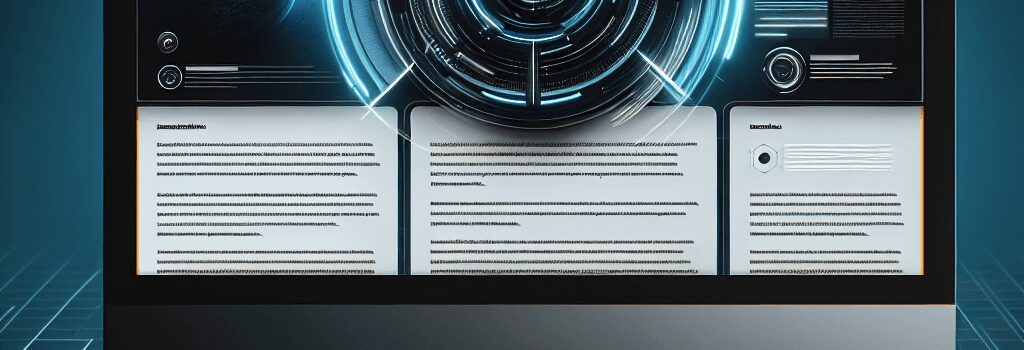Windows 11’s Next-Gen Copilot Vision: A Technical Evolution in Navigating Complex Applications

Microsoft has once again redefined user assistance with a groundbreaking update to its Copilot Vision feature. Originally introduced as an experimental tool to provide context-specific help based on webpage content in Microsoft Edge, Copilot Vision is now extending its reach to any active app window. This means you can query this AI assistant not only about a document’s contents but also gain insights about an application’s user interface and functionality. Early reports from the Windows Insider program indicate that this development could mark a significant transformation in how users learn to navigate and master complex applications.
Enhanced Capabilities: From Browsing to App-Wide Intelligence
The latest update introduces a shift from a narrowly focused feature to a comprehensive solution that analyzes both the content and UI components of any software window. By allowing users to share entire app windows with Copilot Vision, Microsoft opens up the potential for a smoother transition between similar applications—for instance, easing the learning curve when shifting from Photoshop to Affinity Photo.
This approach leverages advanced cloud processing algorithms to interpret visual elements in real time. Unlike previous iterations, which operated purely as a web-based tool, this update offers a hybrid model that taps into both local computing power and cloud-based AI. This enables faster response times and more accurate context recognition, even in intricate applications like Microsoft Word, Excel, and Adobe’s suite of creative tools.
Technical Specifications and Functionality Insights
At the heart of this update is an enhanced image and text recognition system built on Microsoft’s state-of-the-art AI architecture. Key technical improvements include:
- Advanced Visual Parsing: The system now supports high-resolution UI analysis, enabling it to discern and understand various user interfaces, icons, buttons, and tooltips.
- Cloud Integration: By processing data on Microsoft’s robust cloud infrastructure, Copilot Vision benefits from rapid updates and improved model accuracy. This also paves the way for future AI model enhancements without necessitating local install updates.
- Contextual Learning: Through sophisticated natural language processing, the tool can answer questions that not only reflect the content but also provide guidance on interaction patterns and workflow optimizations.
These improvements are the result of deep learning research and iterative testing within the Windows Insider community, ensuring that performance, precision, and user privacy are at the forefront of the development process.
Privacy and Security Considerations
One critical aspect of Copilot Vision is its reliance on cloud processing. To function, the system requires users to share the contents of an application window, raising natural questions about privacy. Microsoft has responded by implementing robust data management protocols:
- All data shared with Copilot is promptly deleted once the session ends, ensuring temporary access only during usage.
- Outputs generated by the system are recorded solely for the purpose of enhancing safety measures and improving overall feature accuracy.
- The system adheres to Microsoft’s strict Privacy Statement, meaning users’ diagnostic and UI sharing information is handled with high confidentiality standards.
While some users may remain cautious about cloud-based processing, Microsoft’s ongoing commitment to data protection helps alleviate many privacy concerns.
User Experience and Practical Benefits
For everyday users and professionals alike, Copilot Vision offers a remarkably intuitive way to learn and adjust to new software environments. Instead of resorting to time-consuming web searches or tutorial reels, users can interact directly with the app interface. This more natural form of learning reduces friction and accelerates the onboarding process. Early testers have reported that the feature not only identifies UI components but also offers contextual advice on their use, effectively acting as a built-in tutor for intricate applications.
Future Perspectives and Industry Implications
This release is a testament to Microsoft’s vision of integrated AI assistance across its Windows ecosystem. As software applications grow increasingly sophisticated, built-in guides like Copilot Vision could become essential for navigating complex toolsets. Looking ahead, industry experts speculate that further enhancements may incorporate real-time collaborative features, more granular UI customization options, and deeper integration with third-party software, further blurring the line between traditional help documentation and interactive guidance.
Moreover, the rollout strategy—starting with Windows Insider program testers—demonstrates a commitment to iterative development driven by live user feedback. Experts predict that as the technology refines, we could see broader applications in fields such as coding assistance, network configuration guidance, and even advanced troubleshooting for professionals in technical industries.
Conclusion: A Promising Evolution in AI-Driven Assistance
Windows 11’s Copilot Vision update represents a significant leap forward in user-centric AI technology. Bridging the gap between static documentation and interactive assistance, this feature holds the promise of transforming how users engage with various applications. By enabling real-time UI analysis and context-aware responses, Microsoft is setting a new standard in tech support and user education, moving towards a future where learning complex software is both seamless and intuitive.